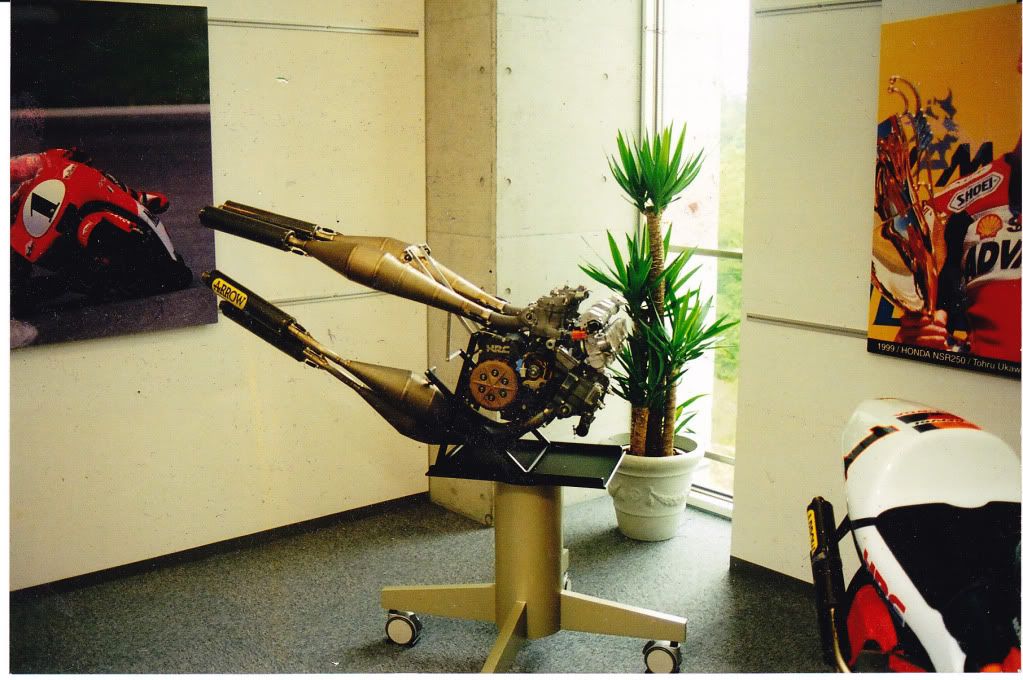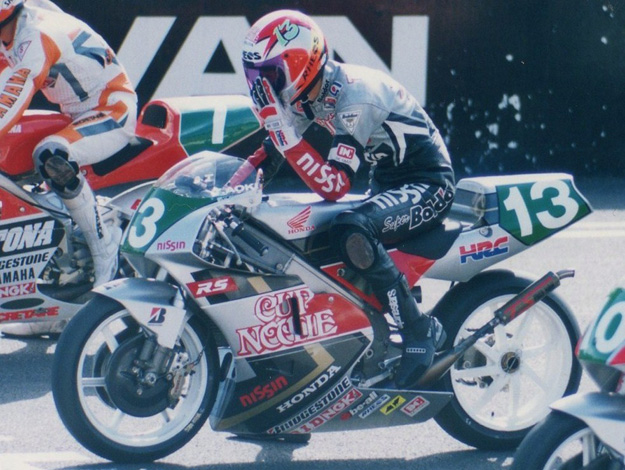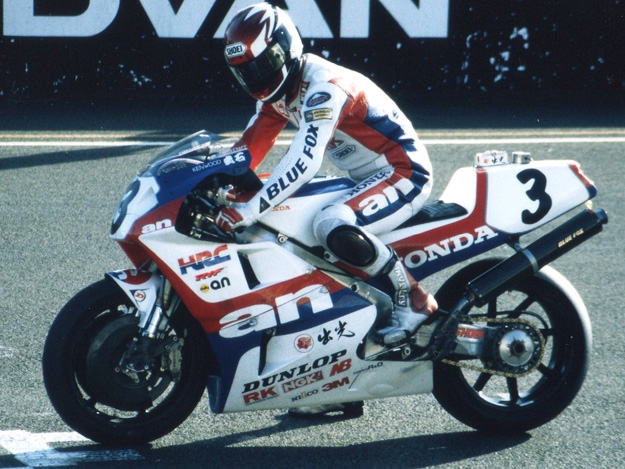

1999 NSR500V







Taken from the Speedzilla website.
Translated by Larry L in the USA.
Aprilia had paved the way with their undersize 410 cc lightweight,
designed as a 'super 250', and in two years had shown promise, but
also revealed some of the pitfalls of going to the minimum number of
cylinders allowed in order to benefit from the most generous weight
allowance. These were twofold. The sheer size of the pistons makes
reliability a potential problem and also limits the capacity for high
revs, most particularly a facility to 'over-rev' beyond the peak power
output, which is very useful in the creative use of wheelspin. Second,
the sheer mid-range torque of the big cylinders - coming at a point
well before the tires have broken traction - makes wheelstanding a
serious barrier to acceleration out of slow corners, already a
weakness because of the reduced power output. Note that these problems
had all been anticipated by Aprilia designer Jan Witteveen, but even
his drastic measure of keeping the capacity well below the maximum
allowed did not solve them. Honda's solution was an acknowledgment of
the merit of Aprilia's concept, but differed in every detail. Where
the peaky Aprilia had twin cranks and disc-valve induction, the
single-crank Honda had torque boosting softer reed valves, and where
the Aprilia was only just over 400 cc, the Honda ran to the full 500
cc allowed. The V-twin, announced in 1995 for its 1996 debut as a
factory development machine and 1997 for privateers, was anything but
a prototype. The design was rationalized and productionised on the
drawing board to a degree never seen before - taking into account not
only ease of manufacture but also of maintenance. The technical
details were also revealed in unprecedented detail at the public
launch of the machine at Assen. At 68 x 68.8 mm, the 499.7 cc 100
degree V-twin was marginally undersquare. Power was quoted at 135 bhp
at a low 10,250 rpm, with torque peaking just 250 rpm lower suggesting
that the bike is not quite so easy to ride as the user-friendly reed
valves might suggest. Like the Aprilia, the Honda did not make the 100
kg minimum allowance. The 1996 factory bikes weighed in at about 103
kg, with the production versions another 6 kg heavier, mainly because
of the use of more durable aluminium rather cost than magnesium engine
casings. The machine made an impressive pole-position debut, ridden by
Tadayuki Okada in Malaysia, and but fad for the changing weather and
two-leg tee! race he might even have won. But on (ad faster tracks, as
the season wore on he found himself caught in a trap the special
mid-size rear tire was short of the traction he needed to use his
advantage of being able to open the throttle earlier, but when he
switched to a full-size V4 rear tire, chatter problems were hugely
magnified to the point that his vision was blurred by the vibration.
Critics also drew attention to the fundamental weakness of the
single-sided rear suspension. Despite these problems, he ran a very
effective season, rewarded by a season's-best second in the final race
in Australia. The bike may not be perfect, but it is extremely good
nevertheless. And available for sale. The complete machine was priced
at less than $100,000 in Europe (before taxes), including a 'set·up
kit'. A spare machine with no kit was $84,400, and a spare engine
almost $35,000. The bike comes with an owner's manual; the three-race
set-up kit includes gaskets, ten spare pistons (allowing two pairs per
race, including those already fitted), more sprockets, and (rather
oddly) a single spare clip-on handlebar for the left side only. This
undercut the obsolescent V4 ROC - or Harris - Yamahas by almost a
third, with lower running costs to boot. There was nothing to suggest
that the V-twin alternative from Honda would be capable of challenging
the factory V4s in the hands of a privateer. Yet, in the short term at
least (and for want of much else on the market), it remained an
attractive proposition.
_________________
If I have to take the carbs off once more...















